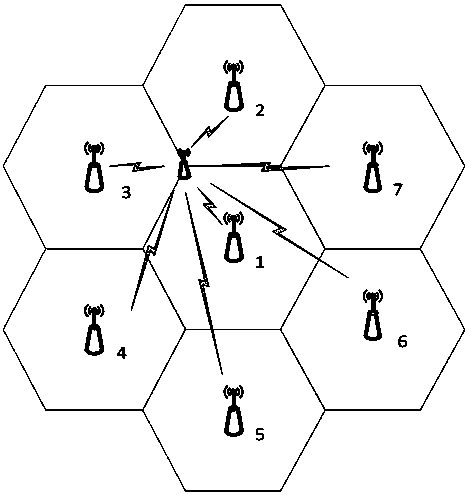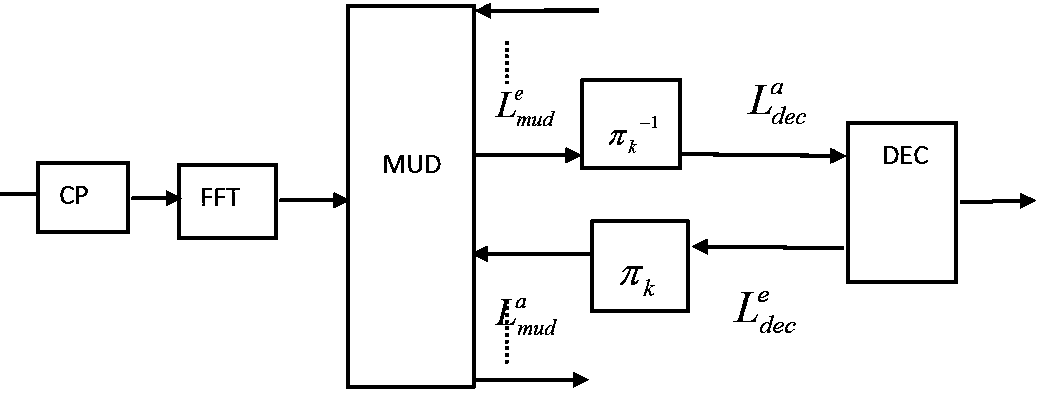A method and device for iteratively suppressing interference between neighboring cells
A technology of inter-cell interference and adjacent cell interference, applied in modulation carrier systems, digital transmission systems, electrical components, etc., can solve problems such as large limitations and performance fading, and achieve the effect of reducing interference and improving anti-interference ability.
- Summary
- Abstract
- Description
- Claims
- Application Information
AI Technical Summary
Problems solved by technology
Method used
Image
Examples
Embodiment Construction
[0050] A kind of interference suppression receiving method based on OFDM-IDMA that the present invention proposes, concrete steps are as follows:
[0051] Such as figure 1 As shown, it is a cell edge user in a 7-cell cellular system. Assume that the current user is in cell A, and the interference it receives comes from base stations in other 6 cells. Assume that all base stations have the same transmit power, and the path loss is inversely proportional to the square of the distance.
[0052] The OFDM-IDMA receiver with BPSK code is used for Monte Carlo simulation to compare the performance of the system under Gaussian white noise channel conditions. First consider that the transmit power of each base station is the same, and the channel fading is inversely proportional to the square of the distance. When the user is at the edge of the cell, consider the bit error situation generated when it receives signals with different signal-to-noise ratios for simulation. The signal-to-...
PUM
 Login to View More
Login to View More Abstract
Description
Claims
Application Information
 Login to View More
Login to View More - R&D
- Intellectual Property
- Life Sciences
- Materials
- Tech Scout
- Unparalleled Data Quality
- Higher Quality Content
- 60% Fewer Hallucinations
Browse by: Latest US Patents, China's latest patents, Technical Efficacy Thesaurus, Application Domain, Technology Topic, Popular Technical Reports.
© 2025 PatSnap. All rights reserved.Legal|Privacy policy|Modern Slavery Act Transparency Statement|Sitemap|About US| Contact US: help@patsnap.com



